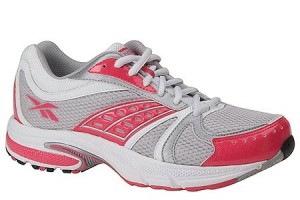The last of the lingering snow has melted out from under us, the spring rains have washed away the memory of the once barren, white landscape, my cat has a bounce in her step, knowing that soon, the windows will open again, my bunny is shedding her winter fluff in anticipation of the warmer weather and my legs are aching for their first run of the season. Spring is in the air.
For many, the thermometer’s climb above freezing is the first sign that it is time to pull their bike, running shoes, tennis racket, etcetera out of storage and shake off the stale winter. For others, it may be the first sign that wedding, entertaining, bathing suit season is on its way. For all of these reasons and more, perhaps this is the year that the season of rebirth inspires you to take up running.
Although running is a simple activity that everyone instinctively knows how to do, the thought of actually taking it up as a hobby can seem daunting. There are clubs, theories, silly outfits and entire communities dedicated solely to running. Fortunately, you don’t need to be an expert to start running. All you really need is:
- A safe place to run (well lit public track, well maintained public trail, calm street, etc.)
- A water bottle
- Comfortable clothes to run in
- Good quality running shoes
The hardest part, for many people, when setting out to accomplish any goal is simply starting. Once you’ve committed to a schedule of running and take that first step out the door in your shiny, new running shoes, the first hurdle has been crossed.
Steps for your first run:
- Walk to your preferred running location, if possible. If you’re lucky, this will be a sufficient warm up for subsequent runs. If this is not possible, or you are not lucky, you will need to do a warm up. To warm up you should walk laps, blocks or what have you until your muscles feel looser and your heart rate and breathing have increased. This should take 5-10 minutes.
- When you feel comfortable, start running. Try to find a pace, rhythm and stride that feel smooth and not awkward. Remember to breath, in through you nose and out through your mouth, constant and steady.
- Run as long as you can, then take an active recovery and walk briskly until you catch your breath.
- Repeat steps 2 and 3 until you really cannot run any further.
- Cool down the same way you warmed up, walking home or walking laps until your heart rate and breathing have returned to pre-running levels. This should also take 5-10 minutes.
- Stretch every major muscle in your leg. You need to stretch the front of your thigh (Quadriceps), the back of your thigh (Hamstrings), your calves (Gastrocnemius and Soleus), your shins (Tibialis Anterior), your Gluteus Maximus (don’t make me say it) and I like to throw in my groin, or ‘hip flexors’ for good measure. I would also recommend stretching your core and lower back muscles, as well as, any other muscle that may feel tight. Here is a good guide. Each stretch should be held for a minimum of 30 seconds and done twice for each leg.
That’s it; you’re done your first run. Easy as pie wouldn’t you say? Though you may have spent more time warming up and cooling down than you actually did running this time, don’t let it discourage you, everyone starts out that way. To progress you need to aim to run at least three times a week. Every week or two you should set a new goal for how far or how long you will run before taking a break for an active recovery. Eventually your active recovery walk will become a jog and then it will disappear completely.
The biggest hurdle when starting a running program for the first time is sticking with it. The best way that I’ve found to combat this problem is to find a running buddy. Find a friend who is also new to running and plan to run together, whether you are the competitive type or just don’t like letting people down, running with a buddy will help keep you motivated on those days that you don’t feel like running. Others ways to stay motivated are to set up a clear and realistic running schedule, set goals and achieve them, continue running if you get sick (scale down to your ability level) and definitely continue running if you feel stressed or too busy, I guarantee it will make you feel better afterwards.

